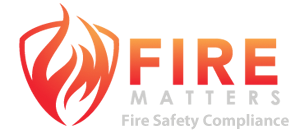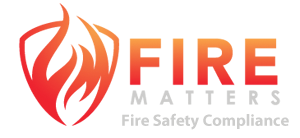Emergency Preparedness
Why do we need building evacuation plans as well as personal plans?
Emergency preparedness
.
In the event of a fire, well-prepared evacuation plans can make a critical difference between life and death. There are two types of evacuation plans to consider:
- Building evacuation plans: broad strategies for safely exiting a building, and
- Personal evacuation plans: individualised plans tailored for those with specific needs.
Both are essential for ensuring safety during emergencies but serve distinct purposes and have unique components. This blog will outline the key differences between these two types of plans and what each should cover.
Building Evacuation Plans: Comprehensive, Facility-Wide Guidelines
A building evacuation plan is designed to ensure the safe and orderly evacuation of all occupants during a fire. It outlines procedures that apply to everyone in the building and addresses key logistical issues to ensure a coordinated response.
Key Elements of a Building Evacuation Plan
- Evacuation Routes
Building evacuation plans must include clear, well-marked evacuation routes. These routes are typically posted on maps displayed throughout the facility and should be visible to all occupants. Routes should consider both primary and secondary exits to account for areas that may be blocked or unsafe during a fire. - Assembly Points
A designated assembly point is crucial for keeping track of building occupants once they have evacuated. This point should be located a safe distance away from the building and far from potential hazards. The assembly area is where roll calls are taken to ensure no one is left behind. - Alarm Systems and Fire Suppression Tools
A well-prepared evacuation plan ensures that all fire alarms, smoke detectors, and fire suppression systems (like sprinklers and extinguishers) are properly maintained. The plan should include instructions for activating alarms and using fire extinguishers when safe to do so. - Roles and Responsibilities
In larger facilities, specific staff members or occupants may be assigned particular responsibilities during a fire. These roles can include monitoring the evacuation, assisting others or liaising with emergency services. - Communication with Emergency Services
Building evacuation plans should detail how and when to contact emergency services, including what specific information needs to be conveyed (e.g. nature of the emergency, number of occupants and location of assembly points).
Personal Evacuation Plans: Tailored, Individual Strategies
While building evacuation plans are broad, personal evacuation plans should be specific to the individual, especially those with mobility issues, disabilities or health conditions that might hinder their ability to evacuate quickly. Personal evacuation plans should also take into consideration essential belongings and pets.
Key Elements of a Personal Evacuation Plan
- Individual Needs and Assistance
The personal plan should outline any specific needs the individual has during an emergency. For instance, someone who uses a wheelchair may require assistance navigating stairs, while an individual with impaired hearing may need special alarms or visual aids to alert them of an evacuation. These considerations should be addressed in advance to ensure the person can evacuate safely. - Assigned Helpers or Buddies
Personal evacuation plans often assign a ‘buddy’ or helper to assist the individual during an emergency. This person should be familiar with the individual’s specific needs and the procedures required to help them evacuate safely. For example, the helper may need to guide a visually impaired person or push a wheelchair user along an evacuation route. - Pets and Service Animals
For many individuals, pets are vital companions and their safety must be accounted for in a personal evacuation plan. This may include keeping a pet carrier, leash or harness in an accessible location near the exit. For service animals, it is essential that they are familiar with evacuation routes and procedures. - Everyday Essentials
In addition to personal safety, a well-prepared personal evacuation plan should include a grab bagof essential items. Having these on hand can significantly reduce stress and hardship in the event of a fire. This bag could include:
-
- Medications: This should include any prescription medication, inhalers, insulin or other potentially lifesaving medication individuals may require during or after the evacuation.
- Prescription Glasses or Hearing Aids: Individuals who rely on these should have backups ready in case they cannot retrieve their daily use items.
- Important Documents: Copies of essential paperwork, such as ID and insurance policy documents to help facilitate a smoother recovery after the emergency.
- Emergency Cash and Credit Cards: Having access to financial resources in the aftermath of a crisis.
- Communication Tools: Mobile devices that can help signal your location.

